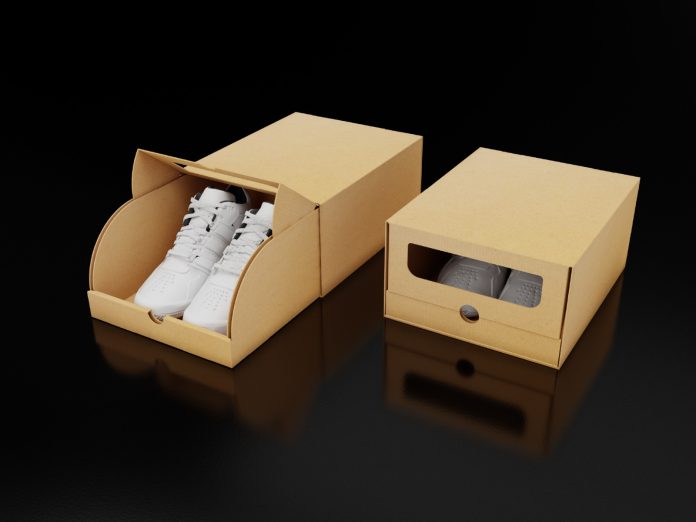In the competitive U.S. retail market, understanding the right shoe box dimensions can be the difference between an efficient supply chain and a costly storage problem. At Words Craze, we’ve noticed that packaging isn’t just about protectiont’s about presentation, fit, and practicality. For every shoe category, from kids’ sneakers to men’s boots, retailers need to select the correct shoe box size to avoid wasted space and ensure a professional customer experience.
This guide breaks down the most common shoe box measurements used by successful shoe retailers in the USA. Based on existing industry studies and shoe box dimensions practices, these dimensions aren’t random—they are tailored to shoe types, sizes, and retail standards.
Why Shoe Box Dimensions Matter in Retail
Retailers deal with large inventory turnover. Having inconsistent shoe box sizes across various brands can create headaches in storage, shipping, and even customer satisfaction. Here’s why using standard shoe box dimensions is crucial:
- Efficient shipping: Boxes that are too large or oddly shaped increase shipping costs.
- Warehouse optimization: Uniform sizing helps in stacking, storing, and managing inventory.
- Customer experience: Right-sized packaging provides protection and professionalism.
Standard Shoe Box Sizes by Category
Retailers across the U.S. typically follow common dimension standards for adult and children’s shoes. Let’s look at some popular categories.
Men’s Shoe Box Dimensions
For men’s shoes, which are usually bulkier due to size and design, the most common box dimensions are:
- Length: 13 to 14 inches
- Width: 8 to 9 inches
- Height: 4 to 5 inches
This shoe box measurement accommodates athletic shoes, formal shoes, and boots up to US size 13. Bulkier items like work boots may require slightly larger boxes.
Women’s Shoe Box Dimensions
Women’s shoes vary more in style—heels, flats, running shoes—so box sizes vary slightly more than men’s, but still within a standard range:
- Length: 12 to 13 inches
- Width: 7 to 8 inches
- Height: 4 to 5 inches
Retailers often have multiple box sizes to match various shoe styles, avoiding oversized packaging.
Kids’ Shoe Box Dimensions
Children’s shoe boxes are naturally smaller. The most widely used shoe box dimensions for kids in the USA are:
- Length: 7 to 10 inches
- Width: 5 to 6 inches
- Height: 3 to 4 inches
These sizes suit toddler to youth sizes and are compact enough to minimize waste while ensuring proper fit.
Specialty Shoe Boxes for Boots and High Tops
Boots and high-top shoes, whether for men or women, require custom sizing. These boxes tend to be larger and taller:
- Length: 14 to 16 inches
- Width: 10 to 12 inches
- Height: 5 to 7 inches
Retailers that carry winter boots, hiking boots, or designer knee-highs often use taller boxes with reinforced cardboard for durability.
Material Considerations in Box Design
Apart from shoe box measurement, the choice of packaging material impacts how well the box functions. Retailers often opt for:
- Corrugated cardboard for strength
- Recycled kraft paperboard for eco-conscious consumers
- Printed coated paperboard for brand appeal
Many U.S. retailers today follow wordscraze-style packaging insights, balancing structure with sustainability. Using recycled materials also supports environmental goals, especially with bulk shipments.
Words Craze Tip: Don’t Over Package
One common mistake we’ve seen at words craze is the tendency to use larger-than-necessary boxes for medium or small shoes. This increases void space and requires extra filler material, which adds cost without benefit. Retailers should choose precise shoe box sizes based on shoe measurements to prevent damage and reduce packaging material.
Shoe Box Size Chart Reference
Here’s a quick reference chart summarizing standard shoe box dimensions by category:
| Category | Length (inches) | Width (inches) | Height (inches) |
| Men’s Shoes | 13 – 14 | 8 – 9 | 4 – 5 |
| Women’s Shoes | 12 – 13 | 7 – 8 | 4 – 5 |
| Kids’ Shoes | 7 – 10 | 5 – 6 | 3 – 4 |
| Boots/High Tops | 14 – 16 | 10 – 12 | 5 – 7 |
This chart helps retailers standardize their packaging while aligning with market expectations.
Customization for Branding and Bulk
Retailers who want to stand out often invest in custom-printed boxes. These allow flexibility in:
- Dimensions tailored to unique shoe types
- Brand logos and messaging
- Internal inserts for delicate items
This is where Custom Packaging becomes a powerful sales tool not just a container but a brand extension. Whether you’re shipping online or selling in-store, a well-designed box increases perceived value.
Cost and Logistics Impact of Box Sizing
Using non-standard shoe box sizes can lead to shipping inefficiencies. Carriers like USPS, UPS, and FedEx price shipping based on dimensional weight. A box just 1 inch larger in each dimension can push your shipping cost up significantly. Standard sizing helps you:
- Stay under size limits for economy rates
- Fit more boxes in a pallet
- Stack neatly in delivery vans
Retailers often analyze shoe box measurements against carrier guidelines to optimize packaging.
Sustainability and Smart Packaging Trends
Many U.S. brands are now adopting sustainable packaging policies. This includes:
- Right-sizing boxes to minimize material
- Using recyclable or compostable materials
- Printing minimal designs to save ink
Retailers using craze-approved methods often lead the way in balancing cost and environmental concerns. When you reduce your box footprint by 10%, you can cut packaging waste by tons annually.
Final Thoughts for Retailers
Selecting the right shoe box dimensions is about more than convenience; it directly affects shipping cost, storage, and brand perception. U.S. retailers must consider the type of shoe, customer expectations, and operational efficiency when choosing shoe box size. Whether you’re selling kids’ shoes, luxury heels, or rugged boots, standardized shoe box measurements are key to smooth operations
